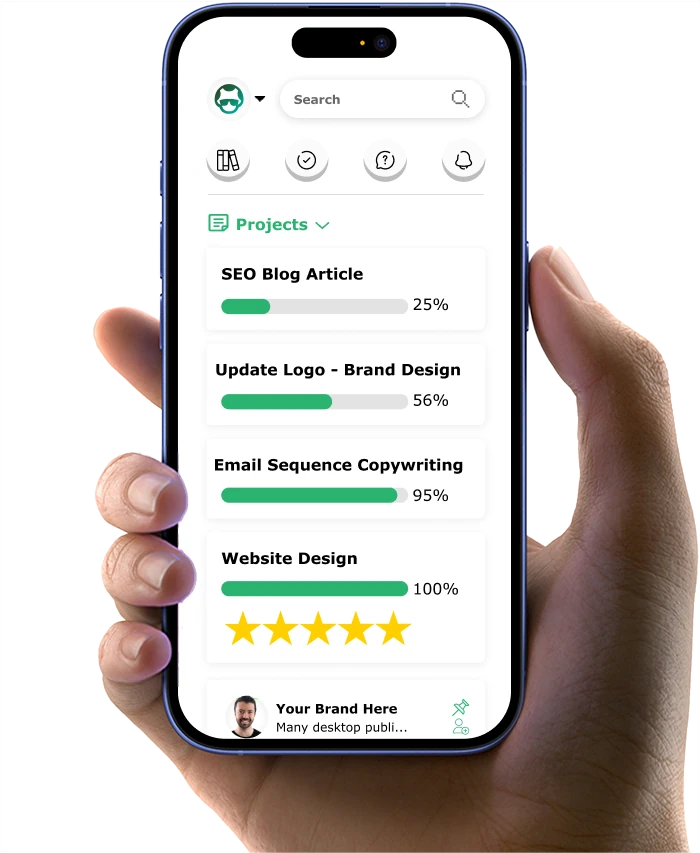Charging Your Clients: 4 Marketing Agency Fee Structures

Most business owners and marketers agree: picking the right marketing agency fee structure is a big deal. Marketing agency fee structure choices affect how you get paid and how you work with your clients.
Once, I watched a friend start his own agency. He got his first big client and was asked, "How do you charge?" He did not know what to say. Should he bill by the hour, charge a flat fee, or get paid for results? He learned that this choice would shape his whole business.
In this article, you will see how to pick the best fee structure for your agency. You will learn what works and what does not from real stories and research.
After reading, you will know:
- The four main ways agencies set fees and why they matter
- The good and bad sides of hourly, project, performance, and subscription models
- How to handle scope creep, late payments, and tough client talks
- What other agencies are charging right now
- A simple checklist for updating your contracts and signing new clients
Want to know which fee structure will help your agency grow? Keep reading to find out...
Want to get all your marketing and funnel work done—without the headaches of hiring a team? Download our free guide: 33 Marketing Projects You Can Delegate to Growbo and discover how to save 100+ hours a month, grow faster, and scale without the overhead.
The 4 Basic Fee Structure Categories
Marketing agency fee structure choices shape how you and your clients work together, so it's important to understand the main categories before you decide. These categories help you match your pricing approach to your agency's strengths and your clients' needs.
Input-based fee structures mean you get paid for the time, effort, or resources you put into a project. This is like billing by the hour or charging for the number of people working on a campaign.
Output-based fee structures focus on what you deliver—like charging for every website page, ad, or blog post you create.
Outcome-based structures are all about results; you get paid based on meeting goals like more leads or higher sales.
Value-based fee structures let you charge for the overall value your work brings to the client, which can be great if you have a proven track record and strong reputation.
Industry Context and Advanced Considerations
You might be wondering how agencies decide which fee structure works best. Agencies often look at their typical project size, client expectations, and the level of risk they're willing to take. For example, larger agencies may prefer value-based or outcome-based models because they can handle more risk and have the resources to track results. Legal agreements are also key—it's smart to clearly outline deliverables, timelines, and payment terms to avoid misunderstandings. Negotiation is part of the process, so be ready to explain why your chosen structure benefits both sides.
Actionable Frameworks
To pick the right marketing agency fee structure, follow these steps:
- List your agency's core services and strengths.
- Identify your ideal client and what they value most (flexibility, results, predictability).
- Review your past projects and see which structure led to the best outcomes for both sides.
- Draft a simple matrix comparing input, output, outcome, and value-based models for your main services.
- Discuss options with your team and get feedback from a trusted client before finalizing.
Relevant Research and Data
According to WebFX's 2025 report, marketing agency pricing varies widely depending on the fee structure, with project-based fees averaging between $1,000 and $7,500 per project, while monthly retainers often range from $2,500 to $10,000. This shows why it's so important for agencies to choose a structure that fits their business model and client expectations.
Key Takeaway
- Key insights from this section include understanding the four main categories of marketing agency fee structures and knowing that each model has its strengths depending on your agency's services and client needs.
- Be sure to review your own project history and client feedback before selecting a fee structure, and always use clear legal agreements to protect both parties.
As you move to the next section, think about how these categories set the stage for specific pricing models like hourly, project-based, and performance-based approaches.
Marketing Agency Fee Structure #1 - Hourly Fee Structure (Pros, Cons, Bottom Line)
The hourly fee structure is a classic choice for marketing agencies, especially when project scopes aren't set in stone. This model lets you bill for every hour worked, which can make budgeting easier for your clients and help your team get paid for all their effort.
You'll find that hourly billing works well for clients who need flexibility or have changing needs, like startups or businesses testing new campaigns. Agencies often use detailed time-tracking tools to keep things transparent and fair for both sides.
Advantages
One advantage of using an hourly fee structure is that it allows the client to have more control over their budget. The client can decide how many hours they want the agency to work on their campaign and can adjust the number of hours as needed. This allows the client to stay within their budget and avoid unexpected costs.
It can also benefit your agency in cases where a project turns out to be a lot more elaborate and time-intensive than it initially sounded. An hourly rate can ensure you’re truly getting paid for the time you’re putting into the project and aren’t a victim of scope creep.
This is especially great for smaller agencies who are just starting out and don’t yet know how much labor and time is involved in a specific type of project. It’s also great for smaller companies who are looking for occasional sporadic support rather than a long-term partnership.
Disadvantages
On the other hand, one disadvantage of an hourly fee structure is that it can create an incentive for the agency to work more hours than are necessary to complete the project, which can increase the cost for the client. This can contribute to an overall work culture within your agency where your staff is milking hours and creating expensive, un-competitive rates for your clients.
Additionally, it can be difficult for the client to predict how much a project will cost because the final cost will depend on how many hours the agency works on the project. They may end up billed an amount that’s drastically more than they expected, which, of course, causes friction.
Another disadvantage is that an hourly fee structure may not be the best option for larger projects that require a big commitment from the agency and long-term partnership.
Bottom Line
In general, an hourly fee structure is most appropriate to use when a client needs the agency to work on a project on an ongoing basis or when the scope of the project is not well-defined and the client wants to be able to adjust the number of hours the agency works as needed.
Industry Context and Advanced Considerations
Hourly pricing is common in situations where the project scope may shift, but it can also create uncertainty for clients who want a clear final price. That's why it's important to set expectations early and use contracts that spell out how hours will be tracked and approved. Negotiating an hourly rate that reflects your agency's expertise and overhead is key to making this model work for everyone involved.
Actionable Frameworks
To get the most out of hourly billing, follow these steps:
- Use a reliable time-tracking system for every project.
- Share regular reports with your client so they know where their budget is going.
- Set a maximum number of hours per week or month to avoid surprises.
- Review and adjust rates annually to keep up with market changes.
Key Takeaway
- Key insights from this section include the importance of transparency and clear communication when using an hourly fee structure, as well as the value of regular reporting and agreed-upon limits to protect both you and your client.
- Consider whether your agency's typical projects and clients are a good fit for hourly billing, and always back up your rates with strong results and open dialogue.
Next, you'll see how project-based and fixed-fee structures compare when scope and deliverables are more predictable.
Marketing Agency Fee Structure #2 - Project-Based/Fixed-Fee Structure (Pros, Cons, Bottom Line)
Project-based or fixed-fee structures are popular for marketing agencies when both you and your client want clarity about what will be delivered and how much it will cost. This model works best when the scope of work is well-defined, like a website launch or a one-time campaign.
Clients appreciate knowing exactly what they'll pay, and your agency can plan resources more efficiently, but it's important to be thorough in your project scoping so you don't underestimate the effort required. Contracts should outline deliverables, timelines, and what happens if the scope changes, so there are no surprises down the line.
Advantages
One advantage of using a project-based or fixed-fee structure is that it allows the client to have a clear understanding of the cost of the project, which can help them plan their budget and avoid unexpected costs.
Because the cost of the project is laid out and agreed upon from the beginning, there are no surprises or sneaky extra fees, which ensures your client stays within budget. And that helps you avoid any awkward confrontations or disagreements about your pricing.
Another advantage is that it can create an incentive for your agency to complete the project as efficiently as possible and manage your resources efficiently in order to meet the fixed cost. This mentality toward running your business can help you create exceptional workers and hit performance metrics in the long run, as it helps you stay focused on what you deliver.
Disadvantages
One disadvantage of a project-based or fixed-fee structure is that it can be challenging for the agency to accurately estimate the amount of work required to complete the project. if you underestimate the amount of work, it can lead to a loss of revenue for the agency.
And if the scope of the project changes or additional work is required, you’ll either have to swallow the costs and get less profit from the transaction or improvise a way for the client to pay extra for additional work. This, of course, can drive dissatisfaction since it may appear to be a breach of your initial agreement.
Bottom Line
Overall, a project-based or fixed-fee structure is most appropriate to use when the scope of the project is well-defined and the agency can accurately estimate the amount of work required to complete the project.
This fee structure is also good when the client is looking for a specific outcome rather than ongoing support or has a fixed budget and is not looking for flexibility to adjust the scope.
Industry Context and Advanced Considerations
In today's agency landscape, project-based fees are often used for branding, website builds, or campaign launches where the work is predictable. However, if a client adds extra requests, you'll need a clear change order process to stay profitable. Negotiating a fair fixed fee means understanding your team's capacity and factoring in a cushion for unexpected changes.
Actionable Frameworks
Here's how to make the most of a project-based fee structure:
- Define all deliverables and milestones in your proposal.
- Include a process for handling scope changes or extra requests.
- Review similar past projects to estimate time and resources accurately.
- Communicate regularly with your client about progress and any changes.
Relevant Research and Data
According to WebFX's 2025 pricing guide, project-based fees can range anywhere from $500 – $50,000.
Key Takeaway
- Key insights from this section include the importance of thorough project scoping and clear contracts when using a fixed-fee structure, as well as the value of a transparent process for handling scope changes.
- Review your agency's recent projects to see where fixed-fee pricing worked well and use those lessons to refine your future proposals.
Next, you'll learn how commission or performance-based models can align agency incentives with client results.
Marketing Agency Fee Structure #3 - Commission or Performance-Based Structure (Pros, Cons, Bottom Line)
Commission or performance-based fee structures are a great fit if you want your marketing agency fee structure to align closely with your client's business outcomes. In this model, your agency is paid based on specific results, like sales, leads, or conversions, which can make your partnership feel more like a shared mission.
This approach is popular for digital campaigns and paid media projects, especially when clients are cautious about upfront spending but want to see real returns. It's important to have a clear agreement about what counts as a successful result and how you'll measure it, so everyone is on the same page from day one.
Advantages
One of the biggest advantages of using a commission or performance-based pricing structure is that it aligns the interests of the agency with those of the client in a way no other pricing structure quite does.
The agency has a strong incentive to work hard to achieve the desired results because they will only be paid if they succeed. Additionally, this type of pricing structure can be a way for clients to manage the risk associated with the marketing efforts, as they only pay if the campaign yields results.
This pricing structure is particularly beneficial for clients from smaller companies or startups, who may not have the budget to pay a large upfront fee but still need to achieve growth. If they’re willing to pay a percentage of the revenue generated as a result of the agency’s work, they can reap the same benefits with lower risks.
Disadvantages
One disadvantage of commission or performance-based pricing is that it can be difficult for the agency to estimate the amount of work required to achieve the desired results, which can make it difficult to plan and budget for the campaign.
Commission or performance-based pricing also creates extra risk for the agency, as you may not be paid if the campaign is not successful. This can be particularly important if you’re just starting out and you don’t quite have tried-and-tested methods for ensuring your processes get reliable, consistent results.
Similarly, you may struggle to accurately assess how much you should be paid through this pricing model if you don’t have an accurate idea of how much work is involved with generating a certain result.
Bottom Line
Commission or performance-based pricing definitely favors the client over the agency, which makes it very easy to sell. It’s particularly well suited for clients who have a specific goal or outcome they want to achieve, such as increasing sales or leads, and are willing to pay for results but are apprehensive of paying a flat fee without a guarantee of results.
This fee structure can work if your agency is ambitious and has a reliable, duplicable method for delivering results every time. However, if your results are hit or miss, or you’re not sure if they’d work for every client you sign on, it may be a bit risky.
Industry Context and Advanced Considerations
Many agencies use performance-based pricing to attract new business, but it does mean taking on more risk—if the campaign doesn't deliver, you may not get paid. That's why legal agreements should spell out key performance indicators (KPIs), reporting timelines, and dispute resolution steps. Negotiating a fair commission rate is all about balancing your confidence in your team's skills with your client's appetite for risk.
Case Studies and Real-World Examples
Consider an agency that runs paid ads for a SaaS company and charges a percentage of the revenue generated from those ads. If the campaign performs well, both sides benefit; if not, the agency absorbs more of the risk. This model works best when the agency has a proven track record and access to reliable analytics.
Actionable Frameworks
To succeed with a commission or performance-based fee structure, try these steps:
- Define clear, measurable KPIs with your client before starting.
- Set up transparent tracking and regular reporting to build trust.
- Include a review period in your contract to adjust terms if needed.
- Limit the number of variables you control to ensure fair attribution.
Relevant Research and Data
According to WebFX's 2025 guide, performance-based marketing fees can range from 12% to 22% of the revenue generated or a flat fee per conversion, depending on industry and scope. This shows why it's important to align incentives and track results accurately for both agency and client.
Key Takeaway
- Key insights from this section include the need for clear KPIs, transparent tracking, and strong contracts when using a commission or performance-based fee structure.
- Weigh your agency's ability to deliver consistent results before offering this model, and use regular reviews to keep your partnership healthy.
Next, you'll explore how subscription-based pricing can provide stability and ongoing value for both agencies and clients.
Marketing Agency Fee Structure #4 - Subscription-Based Structure (Pros, Cons, Bottom Line)
A subscription-based marketing agency fee structure offers your clients ongoing access to your services for a predictable monthly or yearly fee. This model is perfect for agencies that provide continuous support, like content creation, SEO, or digital strategy.
Clients like the stability of knowing exactly what they'll pay, and your agency benefits from steady, recurring revenue. To make this work, clearly define the services included and set expectations for deliverables and response times.
Advantages
A subscription-based pricing structure allows the client to have a predictable budget for their marketing services and gives them access to a wider range of services or tools than they would have access to if they were paying for each service separately. This makes it easier for the client to budget their marketing expenses, as they know how much they will be spending each month or year.
Another advantage is that subscription-based fees create a sense of commitment from both the agency and the client, as the agency will have to continuously provide the services and support, and, in return, the client will be paying for the services over time. This makes it so that both parties have consistent expectations, and it also offers the opportunity to foster meaningful long-term relationships.
Finally, one of the biggest advantages of subscription-based pricing is that agencies can get regular, recurring revenue, which can help support stable, long-term growth. This is a far cry for the feast and famine cycles project or hourly fee structures provided.
Disadvantages
One disadvantage of a subscription-based pricing structure is that it can be difficult for the client to understand the value of each service or tool provided. They may be worried that they’re paying for services they don’t need or that they’re being tricked into spending more money than they should.
Additionally, if the client’s needs change over time, the subscription fee may not be the best option for them. They may need more or less services, which your subscription may not accommodate for. We’ve personally solved this by offering tiered packages that offer different levels of services and support, but it can still be an issue.
Bottom Line
Subscription-based pricing is most useful when the client wants to have ongoing access to a specific set of services or tools and when they want a predictable budget for their marketing services.
It’s also great for clients who need access to a wide range of services, such as marketing support, social media management, or analytics, and want to bundle them together rather than purchasing each service separately.
Industry Context and Advanced Considerations
Subscription pricing is gaining traction as more agencies move toward retainer-based relationships, especially for digital marketing and managed services. Legal agreements should specify service tiers, notice periods for cancellation, and how to handle requests outside the agreed scope. When negotiating, be ready to explain the value of bundled services and why a subscription is more cost-effective for the client over time.
Case Studies and Real-World Examples
For example, an agency offers a monthly subscription that covers social media management, blog writing, and monthly strategy calls. One client, an e-commerce shop, relies on the agency for regular content and campaign tweaks, enjoying peace of mind and fewer surprise costs. The agency, in turn, can plan resources and forecast revenue more accurately.
Actionable Frameworks
To implement a subscription-based fee structure, try these steps:
- Define your core service bundles and set clear pricing for each tier.
- Use contracts to outline what's included and how overages or special projects are handled.
- Schedule regular check-ins with clients to review performance and adjust the package if needed.
- Offer flexible upgrade or downgrade options as client needs change.
Relevant Research and Data
According to WebFX's 2025 report, monthly retainers can range anywhere from $50 to $20,000 or more, showing how subscription models can provide significant value for agencies and clients alike.
Key Takeaway
- Key insights from this section include the stability and predictability offered by subscription-based pricing, the importance of clear service definitions, and the value of regular check-ins to keep clients happy.
- Review your service offerings to see if a subscription model fits, and use contracts to avoid misunderstandings.
Next, you'll be ready to compare all the major fee structures and choose the one that best fits your agency's goals.
Comparing Fee Structures: How to Choose the Best Model
Choosing the right marketing agency fee structure is about understanding your agency's strengths, your client's needs, and the project goals. You want to make sure your pricing model matches the value you provide and the outcomes your clients expect.
Each fee structure—hourly, project-based, performance, or subscription—has its pros and cons, so it's smart to compare them side-by-side before making a decision. Agencies often use a decision matrix to weigh factors like predictability, risk, and flexibility when choosing the best model.
Industry Context and Advanced Considerations
Some agencies even blend models, such as combining a base retainer with a performance bonus, to keep both sides invested. Legal agreements should clarify which model applies to which services and how changes are handled. When negotiating, focus on transparency and how your chosen structure supports your client's business goals.
Actionable Frameworks
To choose the right fee structure, try this checklist:
- List your core services and typical client needs.
- Assess your agency's risk tolerance and resource planning.
- Use a simple matrix to compare each fee structure's fit for your main services.
- Discuss options with your team and key clients before finalizing.
Key Takeaway
- Key insights from this section include the importance of aligning your fee structure with client needs and using clear agreements to avoid confusion.
- Try blending models or using a decision matrix to make your pricing work for both sides.
Want to get all your marketing and funnel work done—without the headaches of hiring a team? Download our free guide: 33 Marketing Projects You Can Delegate to Growbo and discover how to save 100+ hours a month, grow faster, and scale without the overhead.
Conclusion
Picking the right marketing agency fee structure can feel overwhelming, but you don't have to figure it out alone. The way you charge affects everything—from your cash flow to your client relationships.
We explored the four main fee models and how each one can help or hurt your agency. The best structure is the one that fits your goals and keeps things simple for your clients.
KEY INSIGHTS
- Look at your current pricing. Does it line up with the value you deliver and what your clients expect?
- Spell out your payment terms and project scope in every contract to avoid surprises.
- Stay current with industry pricing by checking in on what similar agencies are charging.
These steps will help you set clear expectations, get paid on time, and keep clients happy.
Want to make agency life easier? Try Growbo and get a team of experts to handle your marketing tasks—no more fee stress or project overload. See how Growbo works and take the pressure off your agency.
What fee structure has worked best for you? Share your experience or questions below—I’d love to hear your story and help where I can!
Keep Growin', Stay Focused,
Image Credits:
1. https://mobilemonkey.com/blog/marketing-agency-pricing
2. https://www.growbo.com/pricing
















